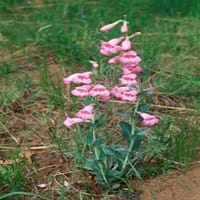Life Span
Perennial
Perennial
Type
Shrub
Flowering Plants
Origin
North America, United States, Northeastern United States, Mid-Atlantic United States, Southeastern United States, Canada
North-Central United States, Central United States, Western United States, Texas
Types
Red chokeberry, Purple chokeberry
Blue Toadflax, Old-Field Toadflax
Habitat
Anthropogenic, Boggy areas, Cliffs, Fens, Swamps, Terrestrial, Wet lands, Woodlands
Cultivated Beds
USDA Hardiness Zone
3-8
3-9
Sunset Zone
A2, A3, 1a, 1b, 2a, 2b, 3a, 3b, 4, 5, 6, 7
1a, 1b, 2a, 2b, 3a, 3b, 10
Habit
Thicket/Colonizing
Upright/Erect
Flower Color
Not Available
Pink, Light Blue, Lavender
Flower Color Modifier
Not Available
Bicolor
Fruit Color
Purplish-black
Not Available
Leaf Color in Spring
Not Available
Light Green, Blue Green, Gray Green
Leaf Color in Summer
Not Available
Blue Green, Gray Green
Leaf Color in Fall
Not Available
Blue Green, Gray Green
Leaf Color in Winter
Not Available
Not Available
Leaf Shape
Elliptic
Oval to egg shaped
Plant Season
Spring, Summer, Fall
Spring, Summer
Sunlight
Full Sun, Partial Sun, Partial shade
Full Sun, Partial Sun
Type of Soil
Clay, Loam
Clay, Loam
The pH of Soil
Acidic, Neutral, Alkaline
Neutral, Alkaline
Soil Drainage
Average
Well drained
Bloom Time
Late Spring, Early Summer
Late Spring, Early Summer, Summer
Tolerances
Not Available
Drought
Where to Plant?
Ground, Pot
Ground
How to Plant?
Cuttings, Divison, Seedlings
Cuttings, Divison, Seedlings
Plant Maintenance
Medium
Medium
Watering Requirements
Average Water Needs, Do Not over Water, Requires regular watering
Average Water Needs, Do Not over Water
In Summer
Lots of watering
Lots of watering
In Spring
Moderate
Moderate
In Winter
Average Water
Average Water
Soil pH
Acidic, Neutral, Alkaline
Neutral, Alkaline
Soil Type
Clay, Loam
Clay, Loam
Soil Drainage Capacity
Average
Well drained
Sun Exposure
Full Sun, Partial Sun, Partial shade
Full Sun, Partial Sun
Pruning
Prune after flowering, Remove branches that rub together, Remove damaged leaves, Remove dead branches, Remove dead leaves, Remove diseased branches by the tool's blades dipped into the alcohol solution
Remove damaged leaves, Remove dead branches, Remove dead leaves
Fertilizers
10-10-10, All-Purpose Liquid Fertilizer, Apply N-P-K
use all-purpose fertilizers
Pests and Diseases
Red blotch
Foliar disease, Root rot, Spider mites
Plant Tolerance
Not Available
Drought
Flower Petal Number
Not Available
Single
Foliage Texture
Not Available
Medium
Foliage Sheen
Not Available
Matte
Attracts
Not Available
Bumblebees
Allergy
Anaphylaxis
Depression, High blood cholestrol, Pain
Aesthetic Uses
Showy Purposes
Showy Purposes
Beauty Benefits
Good for skin
Not Available
Environmental Uses
Air purification, Food for birds, Wildlife
Air purification
Medicinal Uses
anti-cancer, Antioxidants, Cold
Analgesic, Febrifuge, Stomachic
Part of Plant Used
Fruits
Leaves, Root
Other Uses
Pectin
Not Available
Used As Indoor Plant
No
No
Used As Outdoor Plant
Yes
Yes
Garden Design
Foundation, Mixed Border
Rock Garden / Wall, Wildflower
Botanical Name
ARONIA melanocarpa
PENSTEMON grandiflorus
Common Name
Black Chokeberry
Large Beardtongue, Shell-leaf Penstemon, Wild Snapdragon
In Hindi
Black Chokeberry Shrub
Wild Snapdragon
In German
Schwarz Aronia Strauch
Wilde Snapdragon
In French
Noir Chokeberry Arbuste
Snapdragon sauvage
In Spanish
Chokeberry negro Arbusto
Salvaje Snapdragon
In Greek
Μαύρο Chokeberry θάμνων
άγρια Snapdragon
In Portuguese
Chokeberry preto Arbusto
Selvagem Snapdragon
In Polish
Krzew aronii
Dziki Snapdragon
In Latin
Lichen Frutex
Phlox Ferae
Phylum
Magnoliophyta
Magnoliophyta
Class
Magnoliopsida
Magnoliopsida
Order
Rosales
Scrophulariales
Family
Rosaceae
Scrophulariaceae
Clade
Angiosperms, Eudicots, Rosids
Angiosperms, Asterids, Eudicots
Tribe
Maleae
Not Available
Subfamily
Amygdaloideae
Scrophularioideae
Number of Species
Not Available
Not Available
Season and Care of Black Chokeberry and Wild Snapdragon
Season and care of Black Chokeberry and Wild Snapdragon is important to know. While considering everything about Black Chokeberry and Wild Snapdragon Care, growing season is an essential factor. Black Chokeberry season is Spring, Summer and Fall and Wild Snapdragon season is Spring, Summer and Fall. The type of soil for Black Chokeberry is Clay, Loam and for Wild Snapdragon is Clay, Loam while the PH of soil for Black Chokeberry is Acidic, Neutral, Alkaline and for Wild Snapdragon is Neutral, Alkaline.
Black Chokeberry and Wild Snapdragon Physical Information
Black Chokeberry and Wild Snapdragon physical information is very important for comparison. Black Chokeberry height is 182.88 cm and width 182.88 cm whereas Wild Snapdragon height is 61.00 cm and width 25.40 cm. The color specification of Black Chokeberry and Wild Snapdragon are as follows:
Black Chokeberry flower color: Not Available
Black Chokeberry leaf color: Not Available
Wild Snapdragon flower color: Pink, Light Blue and Lavender
- Wild Snapdragon leaf color: Light Green, Blue Green and Gray Green
Care of Black Chokeberry and Wild Snapdragon
Care of Black Chokeberry and Wild Snapdragon include pruning, fertilizers, watering etc. Black Chokeberry pruning is done Prune after flowering, Remove branches that rub together, Remove damaged leaves, Remove dead branches, Remove dead leaves and Remove diseased branches by the tool's blades dipped into the alcohol solution and Wild Snapdragon pruning is done Remove damaged leaves, Remove dead branches and Remove dead leaves. In summer Black Chokeberry needs Lots of watering and in winter, it needs Average Water. Whereas, in summer Wild Snapdragon needs Lots of watering and in winter, it needs Average Water.





